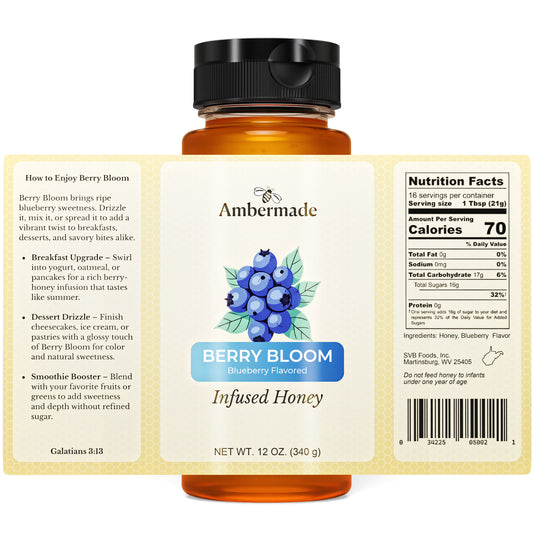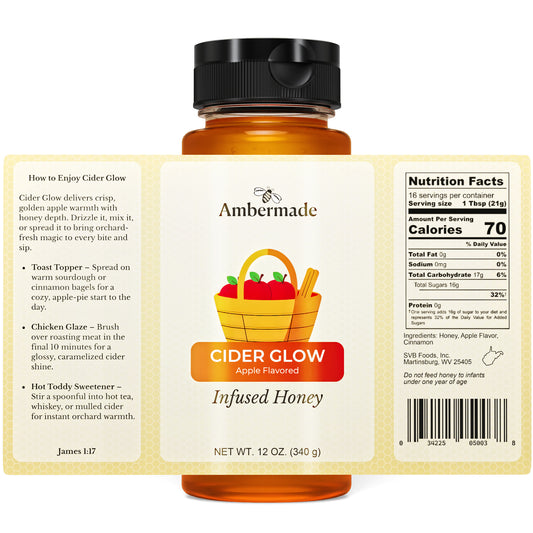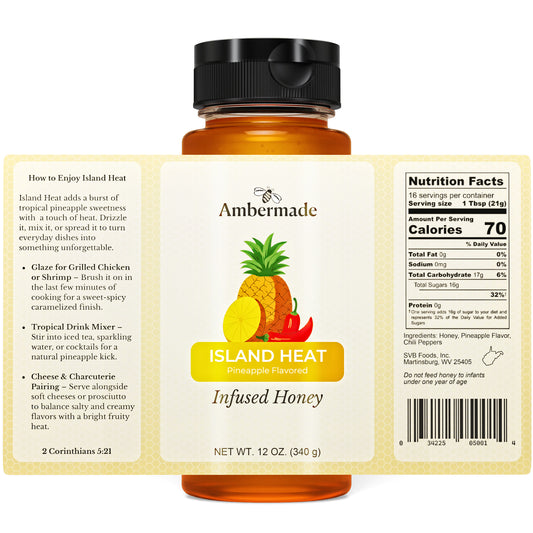
Consistency. Integrity. Flavor.
Featured products
-

 Sold out
Sold outBerry Bloom Infused Honey
Regular price $12.95 USDRegular price -

 Sold out
Sold outCider Glow Infused Honey
Regular price $12.95 USDRegular price -

 Sold out
Sold outIsland Heat Infused Honey
Regular price $12.95 USDRegular price -

 Sold out
Sold outMint Rush Infused Honey
Regular price $12.95 USDRegular price
Learn About Honey
-

What causes honey to crystallize?
Find our what causes honey to turn to a solid, grainy texture.
What causes honey to crystallize?
Find our what causes honey to turn to a solid, grainy texture.
Honey Facts
Honey in the United States
U.S. honey production has remained relatively stable at around 134 million pounds in 2024, primarily from states like North Dakota, South Dakota, California, and Montana. However, domestic supply does not meet total consumption—total U.S. use hit 689 million pounds in 2024. This gap is filled by imports. The major import sources include India, Argentina, Brazil, and New Zealand.
Labeling Claims and Certifications
The FDA defines honey as "a natural sweet substance produced by honey bees from plant nectar" (21 CFR 102.5), with no standard of identity but strict rules against misbranding (FD&C Act §403). Pure honey needs no ingredient list, but claims like "organic" or "raw" trigger verification. USDA handles grading and country-of-origin labeling (COOL) for packed honey bearing grade marks (7 CFR Part 52).
Floral Source Claims (e.g., "Clover Honey"): Must reflect the predominant nectar (>45% by pollen analysis); FDA Compliance Policy Guide 515.300 requires substantiation to avoid misleading buyers.
Organic Certification: USDA-accredited; prohibits synthetic pesticides, GMOs, and irradiation. Only 1-2% of U.S. honey qualifies due to forage controls.
Raw Honey: No FDA definition, but implies minimal heating (<104°F) and unfiltered.
Floral Varieties
Over 300 U.S. honey varieties exist, each shaped by floral sources, climate, and terroir (like wine). Color ranges from water-white (mild) to dark amber (bold), per USDA Pfund scale. Lighter honeys (e.g., acacia) stay liquid longer; darker ones (e.g., buckwheat) offer antioxidants.
Color Grading
The U.S. Department of Agriculture classifies seven color grades based on the Pfund scale.
Water White (< 9 MM)
Extra White (9 - 17 MM)
White (18 - 34 MM)
Extra Light Amber (35 - 50 MM)
Light Amber (51 - 85 MM)
Amber (86 - 114 MM)
Dark Amber (> 114 MM)
Sustainability and Ethical Sourcing
Bees pollinate 35% of U.S. crops ($15B value, USDA 2023); sustainable apiary practices combat colony collapse (40% loss since 2006). Ethical sourcing avoids overharvesting (>60% surplus honey).
Health Benefits
Honey is 80% sugars (fructose/glucose), with trace vitamins, minerals, and antioxidants (USDA Nutrient Database). A tablespoon (21g) provides 64 calories, 17g carbs, and no fat. Honey is sweeter than sugar, enabling less usage.









